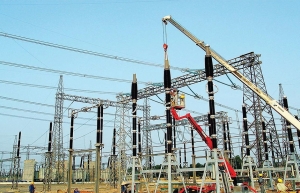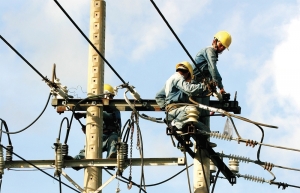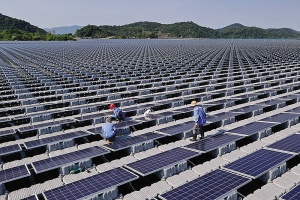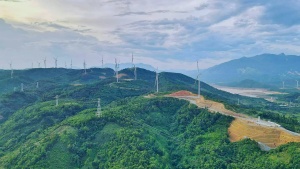Feasibility is a must for successful DPPA mechanism
How do you evaluate the demand for purchasing renewable energy electricity of tenants in industrial parks?
 |
| Tran Dang Khoi, general director of Hero Future Energies Vietnam LLC under Hero Group |
Understandably, the demand for using renewable energy by tenants in such areas is so high because it is one of the mandatory requests from international customers or brands (for example in the garment and textile industry). Currently, textile and garment products have not been included in the first phase of the Carbon Border Adjustment Mechanism application.
However, textiles and garments are also a group of products that have a large environmental impact in the EU, so they are in the group of 30 risky products which can be included in the mechanism from now until 2030. Meanwhile, Vietnam is considered a production hub of many large garments and textiles, so using renewable energy in production is an essential requirement of the textile industry.
In addition, in the context of a difficult economic situation, using renewable energy at a lower price compared to Vietnam Electricity’s (EVN) electricity price has become a need to reduce operating costs to optimise profits. If in the past, businesses and manufacturers only cared about the profit created from the business activity, now one dollar saved is one dollar in profit, thus using renewable energy in production is receiving a lot of attention.
Is this mechanism completely open to make it convenient for the sale and purchase of renewable energy electricity for businesses? If not, what pending problems are there?
This mechanism received positive responses from many parties, from renewable energy project developers to units having demand to use clean energy, however, to make to sale and purchase go smoothly, both the buyer and the electricity supplier still have a series of challenges to solve.
Regarding popularity, it is important to have a bright to help the electricity sellers and buyers know the demands of each other and find each other.
According to the issued Power Development Plan VIII (PDP8), projects that want to participate in the direct power purchase agreement (DPPA) mechanism need to satisfy a series of internal conditions, but almost all of these projects are entangled in legal procedures.
Over 150 solar farm projects, which can participate in DPPA with a total capacity of 13,837MW, were inspected at the end of 2023 due to a lack of legal basis for planning. Meanwhile, it may take a year or more to completely solve the problems of these projects with the eager involvement of the authorities.
In light of this, it can be seen that the gap between the mechanism promulgation and the feasible implementation is huge due to several pending issues.
Is the current grid-connected renewable energy system ready to serve this trading activity, and do fire prevention regulations cause difficulties in this electricity purchase transaction?
Basically, the grid system applied to projects participating in DPPAs is the power grid approved for projects planned in the PDP8, so the availability of the power grid has been taken into account if approved.
Regarding fire prevention and fighting, it will be also calculated during the projects’ development and operation process, so it should not be worth worrying about. It is necessary to add that the above content is only for utility-scale (or solar farm) projects, not to mention solar rooftop projects participating in DPPAs.
What suggestions do you have for the DPPA mechanism to be implemented feasibly?
So as to implement the DPPA mechanism in a truly feasible manner, several recommendations need to be considered by competent state agencies.
It is necessary to quickly review the problems of projects approved in PDP8 that are still in trouble so that these projects can participate in DPPA as soon as possible.
When it comes to projects that do not have legal problems but are delayed in implementation for more than 6-12 months due to the investor’s weak capacity, the investor’s status needs to be revoked and then the planned project will be bid or transferred to other potential investors, with the requirement of committing to specific months for installation.
Furthermore, it needs to quickly clarify the kind of DPPA’s fee that shall be charged in case using EVN’s transmission line.
Last but not least, it is necessary to develop an information portal to create a playground for investors and electricity buyers to meet each other. This portal is similar to EVN’s portal for the rooftop solar segment.
 | DPPA decree may require supplements The draft decree on direct power purchase agreements, if adopted, will be a convenient mechanism for both renewable energy power generation projects and large customers, but there are still concerns about power transmission and expanding the number of electricity buyers. |
 | DPPA streamlining closer to acceptance The business community has asked for relaxed regulations for large customers to be able to buy and sell electricity directly. |
 | Vietnam authorises DPPA for rooftop solar and biomass projects A recently issued government decree permits rooftop solar, waste-to-energy, and biomass projects to engage in direct power purchase agreements (DPPA) without routing through Vietnam Electricity (EVN). |
 | US applauds Vietnam for approving DPPA decree The United States Mission to Vietnam has applauded the government for approving a decree on the direct power purchase agreement. |
 | DPPA approval a win for clean energy The US Department of State’s Bureau of Energy Resources (ENR) applauded the Vietnamese government's approval of a direct power purchase agreement (DPPA) on July 3, a significant milestone towards achieving net-zero emissions by 2050. |
What the stars mean:
★ Poor ★ ★ Promising ★★★ Good ★★★★ Very good ★★★★★ Exceptional
Related Contents
Latest News
More News
- SCG and seven member companies honoured in Top 100 Sustainable Businesses 2025 (December 08, 2025 | 09:00)
- Nestlé Vietnam pioneers sustainable development and promotes business connections (December 06, 2025 | 12:09)
- CSI 2025 highlights rise of Vietnam’s green champions (December 06, 2025 | 09:00)
- Acecook Vietnam named among top 100 sustainable businesses (December 06, 2025 | 08:00)
- Vietnam’s forest carbon credits draw global interest (December 05, 2025 | 17:41)
- Coro Energy to launch BESS Pilot in Vietnam (December 04, 2025 | 15:12)
- Vietnam strengthens energy storage pathway (December 04, 2025 | 15:05)
- Women take leading role in agriculture and food systems (December 03, 2025 | 19:04)
- Experts highlight unpaid care work as key barrier to gender equality (December 03, 2025 | 15:15)
- Vietnam sets pace for dual transition in industry and trade (December 03, 2025 | 14:12)

 Tag:
Tag:






















 Mobile Version
Mobile Version